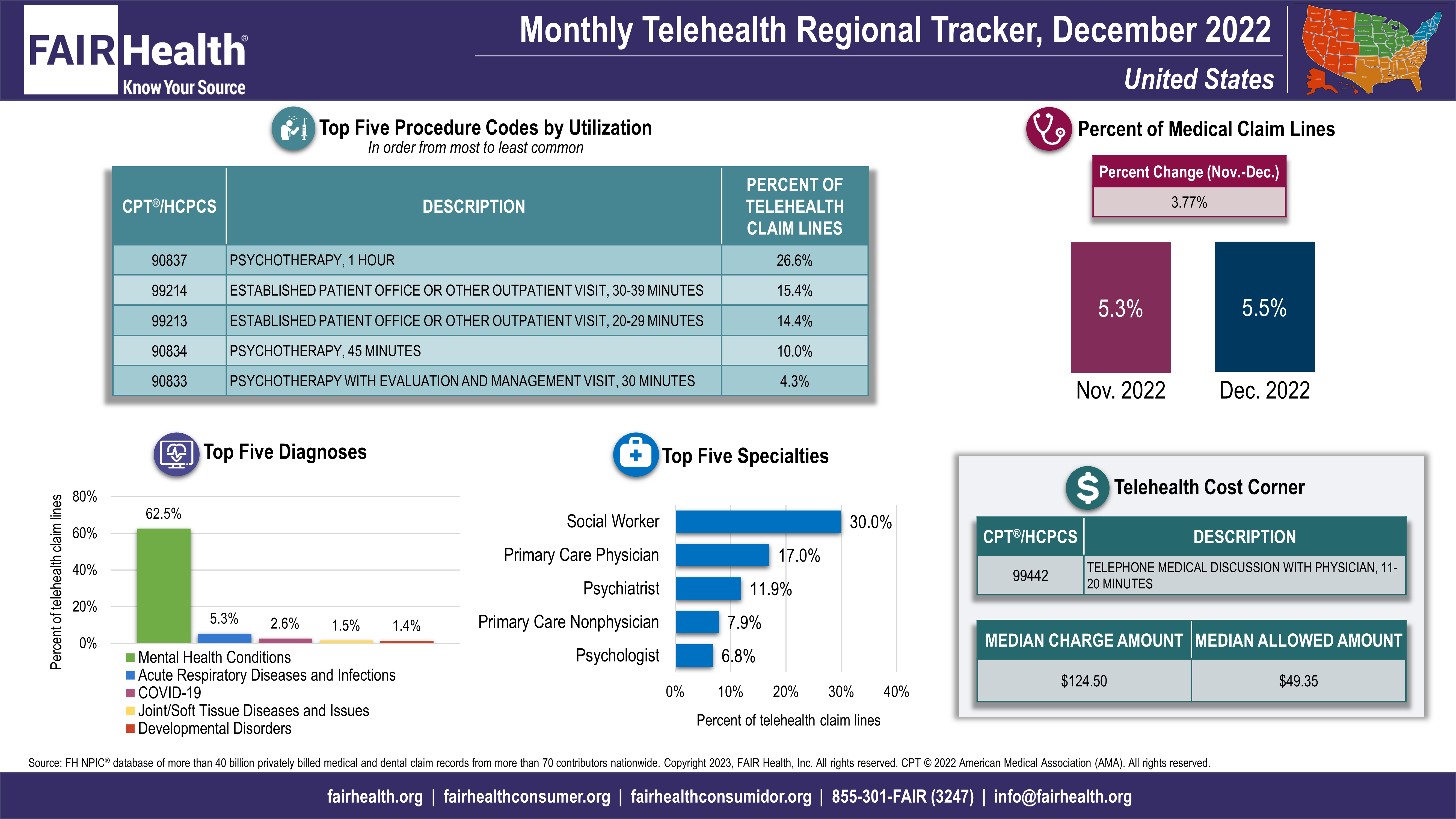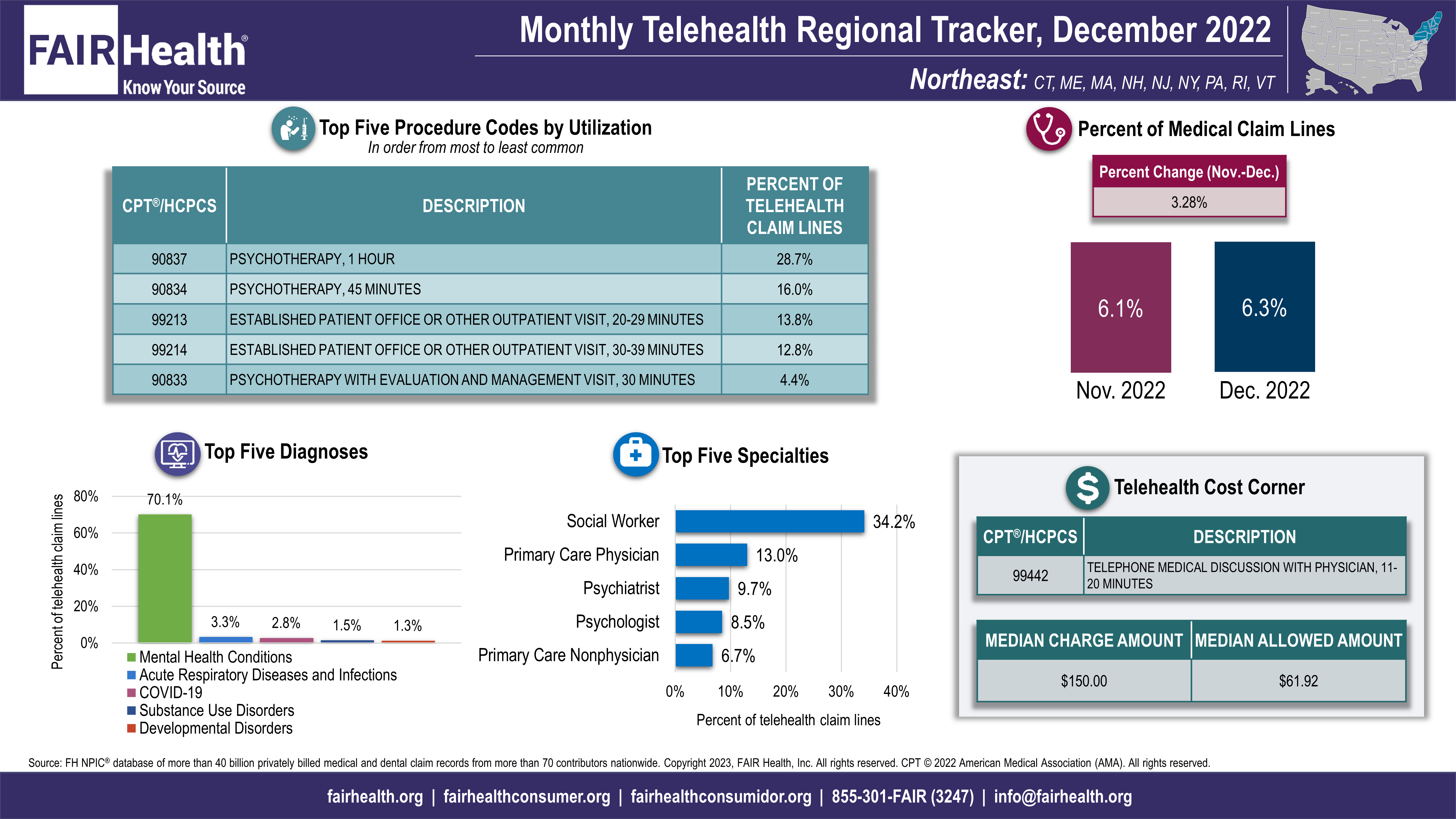- Center on Health Equity & Access
- Clinical
- Health Care Cost
- Health Care Delivery
- Insurance
- Policy
- Technology
- Value-Based Care
Contributor: US Telehealth Utilization Grew Nearly 4% in December 2022
The growth in telehealth utilization continued an increase begun in November 2022.
National telehealth utilization increased 3.8% in December 2022, from 5.3% of medical claim lines in November to 5.5% in December, according to FAIR Health’s Monthly Telehealth Regional Tracker.
In December, telehealth utilization also increased in 3 US census regions—the South (7.1%), Midwest (5.0%), and Northeast (3.3%)—while remaining unchanged in the West. The data represent the privately insured population, including Medicare Advantage and excluding Medicare fee-for-service and Medicaid.
Credit: FAIR Health

Diagnoses
In December 2022, COVID-19 remained in third place among the top 5 telehealth diagnoses nationally and in every region, the rank it had held since November. While maintaining that rank, it increased in percentage share of telehealth claim lines nationally and in every region.
In December, acute respiratory diseases and infections remained in second place nationally and in every region, the rank it had held since October. It continued to climb in percentage share of telehealth claim lines nationally and in the Northeast and South.
In the South in December, encounter for examination went from unranked to fifth place among the top 5 telehealth diagnoses.
Specialties
The rankings of the top 5 telehealth specialties did not change in December 2022. Social worker remained in first place nationally and in every region, though it fell in percentage share of telehealth claim lines everywhere but the Northeast. Primary care physician, in second place nationally and in every region, increased everywhere in percentage share of telehealth claim lines.
Credit: FAIR Health

Procedure Codes
From November to December 2022, the rankings of the top 5 telehealth procedure codes did not change nationally or in any region when compared to the prior 10 months. The number 1 telehealth procedure code nationally and in every region remained CPT 90837, 1-hour psychotherapy. However, CPT 90837 and CPT 90834, 45-minute psychotherapy, declined in their percentage share of telehealth claim lines nationally and in most regions. The exception was the Northeast with CPT 90837, which exhibited an increase.
Costs
For December 2022, the Telehealth Cost Corner spotlighted the cost of CPT 99442, telephone medical discussion with physician or other qualified health care professional, 11-20 minutes. Nationally, the median charge amount for this service was $124.50, and the median allowed amount was $49.35.
About the Monthly Telehealth Regional Tracker
Launched in May 2020 as a free service, the Monthly Telehealth Regional Tracker uses FAIR Health data to track how telehealth is evolving from month to month. An interactive map of the 4 US census regions allows the user to view an infographic on telehealth in a specific month in the nation as a whole or in individual regions. Each infographic shows month-to-month changes in telehealth’s percentage of medical claim lines, as well as that month’s top 5 telehealth procedure codes, diagnoses, and specialties. Additionally, in the Telehealth Cost Corner, a specific telehealth procedure code is featured, with its median charge amount and median allowed amount.
For the Monthly Telehealth Regional Tracker, click here.
Trends in Hospital Pricing for Vulnerable Emergency Department Users, 2021-2023
December 4th 2025Self-pay emergency department prices rose significantly from 2021 to 2023, especially at for-profit and system-affiliated hospitals, highlighting growing affordability challenges for uninsured and underinsured patients.
Read More
